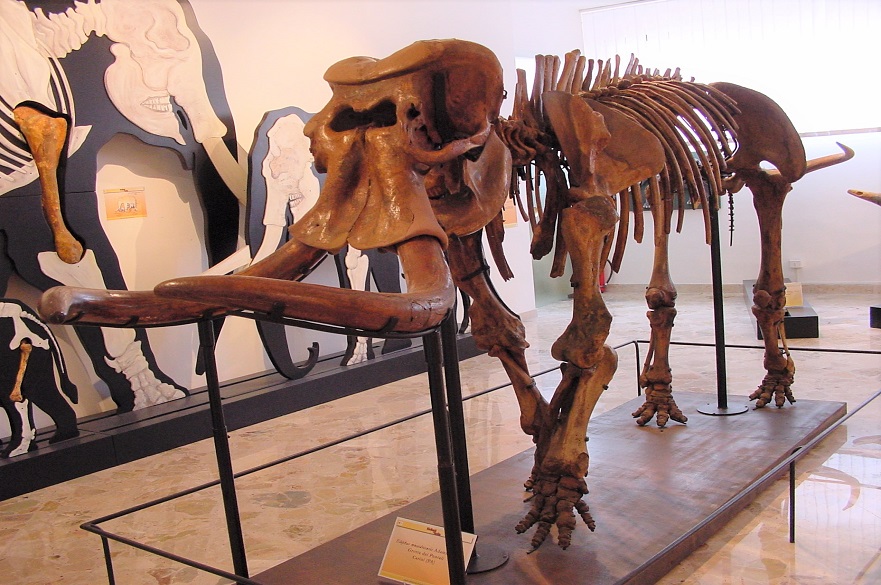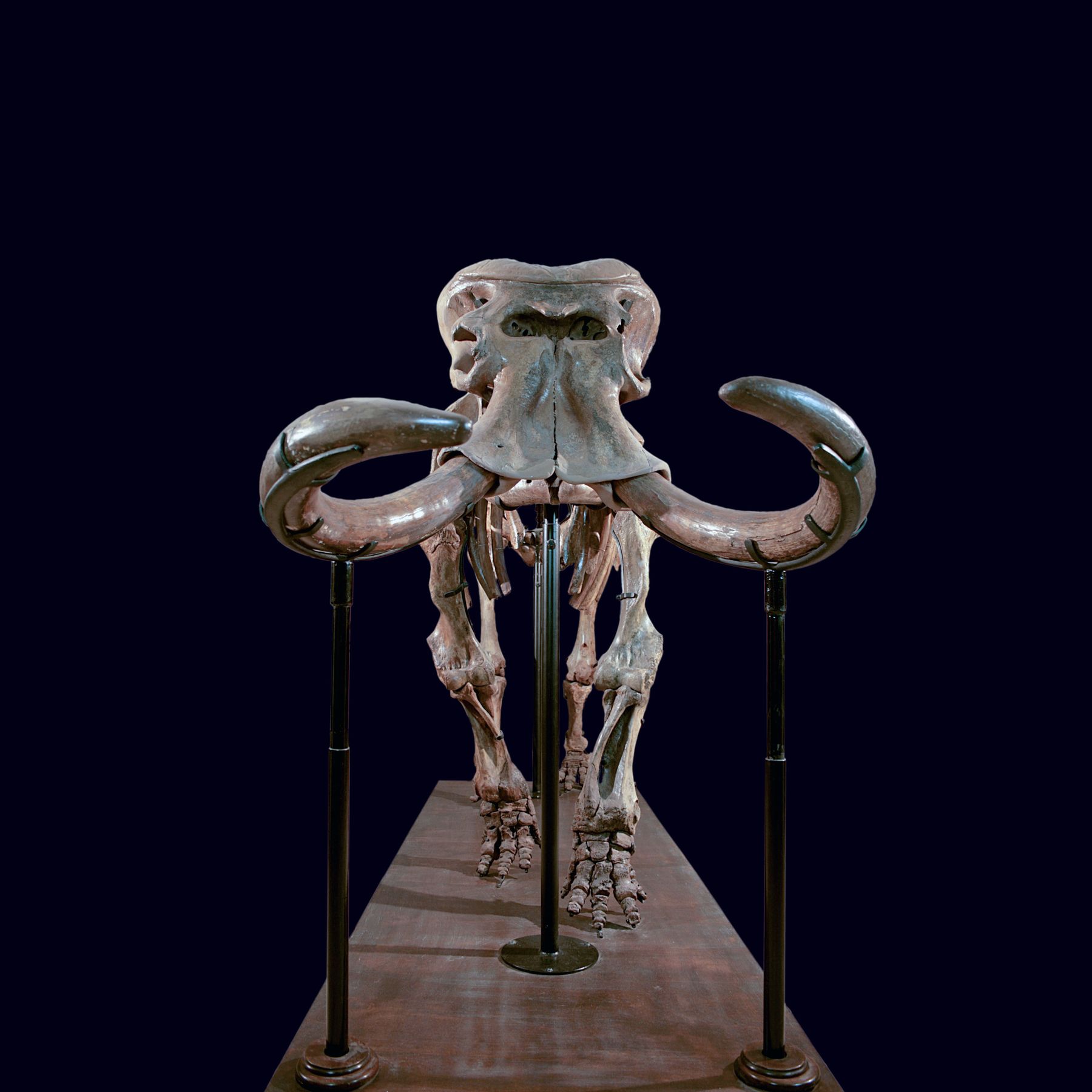One of the largest ever land mammals evolved into extinct dwarf elephant – losing more than 8,000kg in weight and almost 2m in height
An extinct species of dwarf elephant experienced a weight and height reduction of 8,000kg and almost two metres after evolving from one of the largest land mammals that ever lived, a new study has confirmed.
By Dave Rogers | Published on 18 June 2021
Categories: Press office; Research; School of Science and Technology;

The island-dwelling Sicilian dwarf elephant Palaeoloxodon cf. mnaidriensis – which it is thought may have become extinct about 19,000 years ago – was just 15% of its original body mass by the time its dwarfing process was complete
The study, involving Nottingham Trent University, the University of Potsdam in Germany and the Natural History Museum, used combined molecular and fossil evidence to define the minimum and maximum dwarfing rate of the species.
The team found that the less than 2m tall dwarf elephant reduced in weight and height by a maximum 200kg and 4cm per generation.
Because of their insular and isolated environments, evolution on islands is a process which can lead to a variety of extreme changes in a short timeframe, including dwarfism and gigantism and is often referred to as ‘evolution in action’. To put the extent of the size reduction of the dwarf elephant into context, it would be comparable to modern humans dwarfing to approximately the size of a Rhesus monkey.
As part of the work the team successfully recovered ancient DNA from dwarf elephant remains from Sicily’s Puntali Cave, with an estimated age of between 175,000 and 50,000 years.
Many island dwarfs and giants are now extinct and measuring the rate of change in extinct animals from fossils alone can be challenging due to the incompleteness of the fossil record. And molecular dating using ancient DNA to measure the rate of evolutionary change is hampered by the fact they often existed on islands with warm climates in which DNA does not survive well.
To overcome the challenge of DNA degradation, the researchers analysed a piece of petrous bone – part of the skull that contains the organs of the inner ear – which is known to preserve DNA better than other parts of the skeleton.
By combining the DNA and fossil evidence the researchers were able to determine that this specific Sicilian elephant’s mitochondrial, or maternal, lineage diverged from the straight tusked elephant Palaeoloxodon antiquus from Neumark Nord (Germany), which stood at almost 4m tall with a weight of ten tonnes.
Palaeoloxodon antiquus lived on the European mainland between 800,000 and 40,000 years ago and the team believes it will have colonised Sicily some time between 70,000 and 200,000 years ago. Colonisation probably occurred during periods of cold climate when sea levels were lower, exposing land bridges that the elephants could have utilised to colonise the islands.
It is thought that the dwarfing process at the earliest began once the Puntali elephant diverged from its mainland relative.
Using the estimated age of the Puntali elephant fossil, the size and mass of the straight-tusked elephant, and the estimated start of the dwarfing process, the team was able to calculate size and body mass reduction rate per year and per generation.
The study, which is published in the journal Current Biology, also involved the University of York, the University of Iceland, the University of Palermo and the University of Cambridge.

Reconstruction of an almost complete dwarf elephant skeleton found in the same cave, the Puntali cave (Archives of the Gemmellaro Geological Museum)
“By combining ancient DNA with paleontological evidence we can show the timing of observable evolutionary changes with greater accuracy,” said Dr Axel Barlow, an expert in palaeogenomics and molecular bioscience in Nottingham Trent University’s School of Science and Technology.
He said: “The magnitude of dwarfing resulting from this rapid evolutionary process is truly striking, resulting in a loss of body mass of almost 85% in one of the largest ever terrestrial mammals. As the descendants of giants, the extinct dwarf elephants are among the most intriguing examples of evolution on islands.”
Dr Victoria Herridge, an evolutionary biologist based at the Natural History Museum London, said: “It’s such an achievement to successfully sequence an ancient mitochondrial genome from a Sicilian dwarf elephant, and to finally have DNA from a southern European straight-tusked elephant.
“It opens the door for more studies of this kind, and with it the chance to finally crack one of the big mysteries of evolutionary biology: why elephants evolve to be so small on islands.”
Dr Johanna Paijmans, a research fellow in the Department of Zoology at the University of Cambridge, said: “This is a really exciting example of the power of multidisciplinary studies. Only through combining multiple lines of evidence we were able to gain a better understanding of the dwarfing process of this iconic species.”
The dwarf elephant remains are kept in the Gemmellaro Museum (University of Palermo) where the specimens were sampled.
Dr Giulio Catalano, a postdoctoral researcher in the STEBICEF Department at the University of Palermo, said: “With this exciting study we shed new light on the complex evolutionary history of dwarf elephant species lived in Sicily in the Pleistocene”.
Notes for Editors
Press enquiries please contact Dave Rogers, Public Relations Manager, on telephone +44 (0)115 848 8782, or via email.
Nottingham Trent University (NTU) was named University of the Year 2019 in the Guardian University Awards. The award was based on performance and improvement in the Guardian University Guide, retention of students from low-participation areas and attainment of BME students.
NTU was also the Times Higher Education University of the Year 2017, and The Times and Sunday Times Modern University of the Year 2018. These awards recognise NTU for its high levels of student satisfaction, its quality of teaching, its engagement with employers, and its overall student experience.
The university has been rated Gold in the Government’s Teaching Excellence Framework – the highest ranking available.
It is one of the largest UK universities. With over 37,000 students and more than 4,000 staff located across four campuses, the University injects £1.6bn into the UK economy. It has been the largest recruiter of UK undergraduates in each of the last four years. With an international student population of more than 6,000 and an NTU community representing around 160 countries, the University prides itself on its global outlook.
The university is passionate about creating opportunities and its extensive outreach programme is designed to enable NTU to be a vehicle for social mobility. NTU is among the UK’s top five recruiters of students from disadvantaged backgrounds and was awarded University of the Year in the UK Social Mobility Awards 2019.
The Natural History Museum is both a world-leading science research centre and the most-visited natural history museum in Europe. With a vision of a future in which both people and the planet thrive, it is uniquely positioned to be a powerful champion for balancing humanity’s needs with those of the natural world.
It is custodian of one of the world’s most important scientific collections comprising over 80 million specimens. The scale of this collection enables researchers from all over the world to document how species have and continue to respond to environmental changes - which is vital in helping predict what might happen in the future and informing future policies and plans to help the planet.
The Museum’s 300 scientists continue to represent one of the largest groups in the world studying and enabling research into every aspect of the natural world. Their science is contributing critical data to help the global fight to save the future of the planet from the major threats of climate change and biodiversity loss through to finding solutions such as the sustainable extraction of natural resources.
The Museum uses its enormous global reach and influence to meet its mission to create advocates for the planet - to inform, inspire and empower everyone to make a difference for nature. We welcome over five million visitors each year; our digital output reaches hundreds of thousands of people in over 200 countries each month and our touring exhibitions have been seen by around 30 million people in the last 10 years.